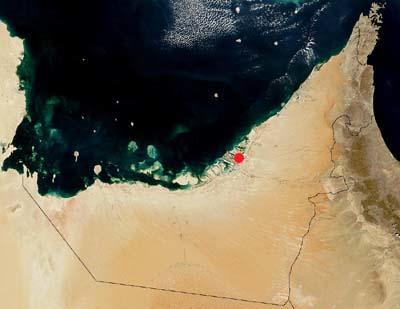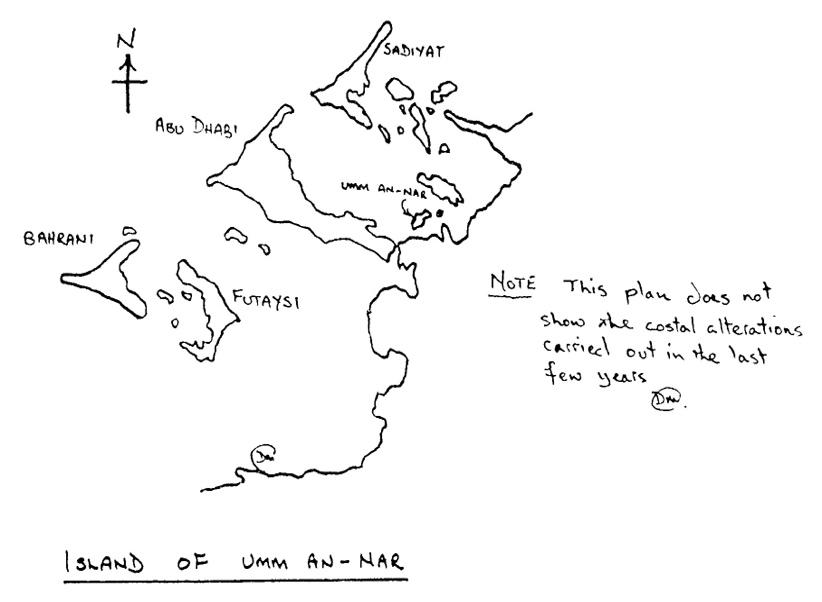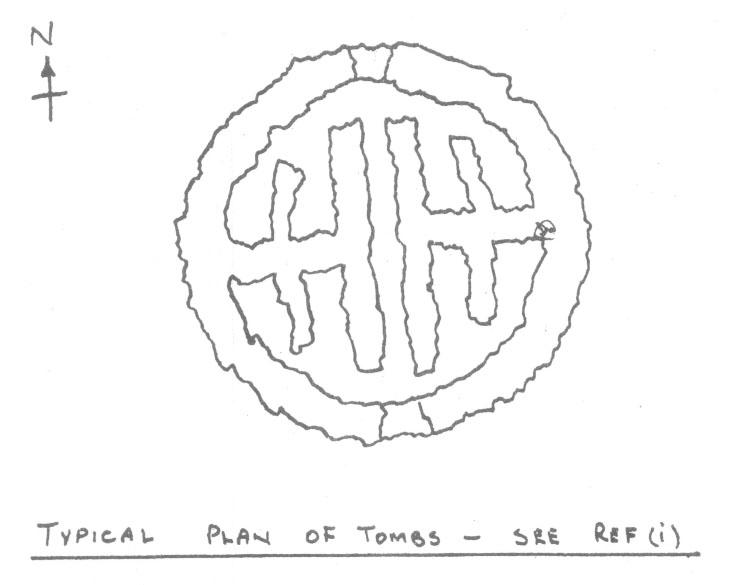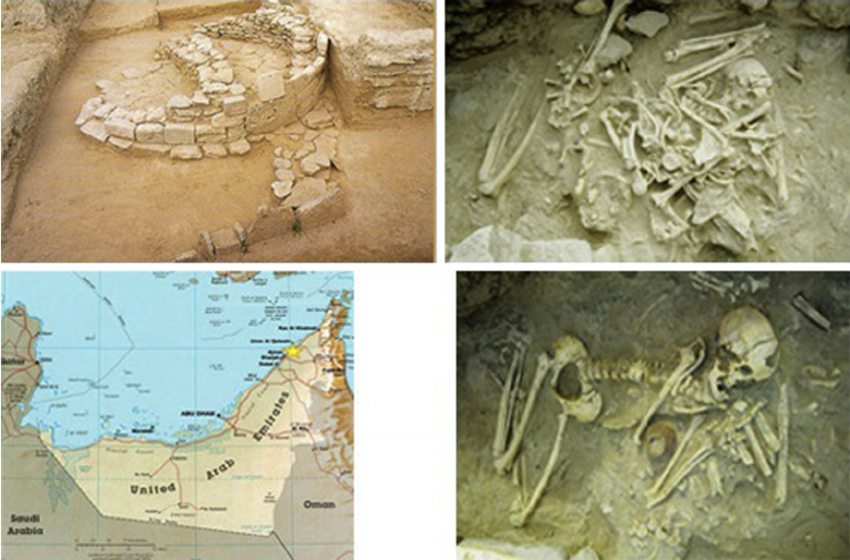The continuity of generations assumes that every subsequent generation accepts and develops the culture of its ancestors as these ties help to understand history, relationships with other nations, and plenty of other vital issues. Umm al-Nar can be regarded as one of the most important locations in Abu Dhabi that represent the features of that epoch, namely, Umm an-Nar culture, including its traditions, people, and life in general. This report aims at revealing the essentials of the Umm al-Nar site along with its significance in the framework of cultural heritage and tourism to understand the role of this geoarchaeological complex in nowadays national and global contexts.
Umm al-Nar Site
Umm al-Nar refers to the bronze age that existed during 2600-2000 BC of archaeology and is located on the territory of the modern United Arab Emirates. It was the place of the first archaeological excavations on the coast of Abu Dhabi when such tombs as Tomb A, Tell Abraq, Mowaihat, Al Sufouh, and Shimal were detected (Umm al-Nar, n.d.).
Even though Umm al-Nar is currently under the protection of the government, it is located on the border of two countries, in particular, the United Arab Emirates and Oman. At the same time, this site is the United Arab Emirates’ center of oil refinery and construction of power plants that, in their turn, limit the access of citizens and tourists to this cultural heritage representation (Umm al-Nar Culture, 2016). However, according to the recent data, the government of the United Arab Emirates conducts negotiations concerning the expansion of access to this monument complex.
Maps and Images
Both print and electronic resources offer a great variety of images and maps illustrating Umm al-Nar outside, inside, and from the cosmos. A series of visual representations of Umm al-Nar can be found below.





History of the Site
The designation of Umm al-Nar can be regarded as “mother of fire” (Umm al-Nar Culture, 2016). This site consists of two parts, namely, tombs and settlement. Previous to Umm an-Nar culture, it belonged to the Ubaid period (5000-3800 BC) and the Hafit culture (3200 – 2600 BC) accordingly (Umm al-Nar Culture, 2016).
The Ubaid period is characterized by the onset of trade with foreign countries, especially Mesopotamia that embraced parts of modern Turkey, Syria, and Iran. In its turn, the Hafit culture is best known for the appearance of beehive burials. The Wadi Suq period (2000-1600 BC) followed the Umm al-Nar epoch. The last phase of the bronze age period (1600-1300 BC) is represented by a small number of settlements and the overall decline of Umm an-Nar culture. However, it is Umm al-Nar that was marked by a cultural splash of this area that occurred due to the trade with other countries.
The first archaeological excavations began in 1959 when the expedition from Denmark explored the site and identified several specific stone mounds. The subsequent expeditions conducted during 1959-1995 discovered more tombs and cultural artifacts (Corfield, 2011). It is necessary to note that not only Danish experts but also those from other countries led excavations. For example, Shah Al Siwani, a former member of the Antiquities Director in Baghdad, and his team of archaeologists reconstructed the tombs that were identified earlier by their Danish colleagues (Umm al-Nar Culture, 2016). The exploration of the Umm al-Nar area can be observed nowadays as well.
The Settlement of People
Despite the findings that will be mentioned below, scientists are not sure of the nation that lived here. Nevertheless, it is evident that those people were fishing and had extensive trade relations (Umm al-Nar Culture, 2016). One of the enigmas relates to the finding of illustration of camel bones and camels on the tombs as this settlement arose long before the domestication of these animals.
Another fact is that there was no freshwater, and the area might seem unfavorable for the formation of the village at the dawn of civilization. It is also a thought-provoking fact that Professor who visited the site in 1958 identified several flint flakes. According to Corfield (2011), “these date long before 2700 BC and would lead one to think that maybe there is a still earlier settlement site to be found somewhere in this region” (par. 14).
This proves that Umm al-Nar settlement may be even older and more developed than scientists used to consider. According to the recent bioarchaeological study conducted by American scholars, a young non-local woman was identified in the Tomb of Tell Abraq (Fig. 1. Top Left: The Umm an-Nar tomb at Tell Abraq, located 10 m west of a fortification tower, 2016).
The images of this study can be found in Figure 5. Exploring this skeleton’s “strontium, oxygen, and carbon isotope values”, scientists determined that it was a young woman aged between 18 and 20 years who immigrated and thus was exposed to the increased immunological risk (Fig. 1. Top Left: The Umm an-Nar tomb at Tell Abraq, located 10 m west of a fortification tower, 2016, par. 1). Besides, the mentioned discovery confirms the existence of close relations of Umm al-Nar with other cultures and countries.
It seems essential to emphasize that due to the lack of freshwater, the island remains uninhabitable, yet there is a well-developed technological structure of production. In particular, a big factory on oil refining was built as well as a few plants that feed the city of Abu Dhabi (Potts & Hellyer, 2012). Except for employees working on factories, various scientists try to resolve all the mysteries of this outstanding island and understand the life of ancient settlements in the area. However, Umm al-Nar remains a mystery to many of the country’s best minds.
The Findings
The archaeologists determined that Umm al-Nar was a village with stone buildings and tombs erected on a rocky plateau where only fifty of the latter were preserved till nowadays. The rounded tombs are rather roomy as each of them has more than one room that was covered with stone vaults (Corfield, 2011).
The facades of these buildings are lined with stone carvings with animal motifs. Inside them, archaeologists discovered several attention-grabbing artifacts – pottery delivered from Mesopotamia (Corfield, 2011). Being a pioneer among the archaeological discoveries in the United Arab Emirates, Umm al-Nar was full of jewelry and weapons. During their excavations and research, scientists repeatedly found unique items both in tombs and settlement buildings, among which there is amazing pottery from overseas and nearby areas, a weapon that was made of copper alloy, and beads with Indian and Syrian ornaments.
Importance to the Cultural Heritage
Speaking of the cultural heritage, it is crucial to pinpoint that Umm al-Nar represents a great part of the bronze age epoch and thus serves as an encyclopedia of that period. Potts and Hellyer (2012) state that it is an outstanding example of a type of architectural ensemble that illustrates a significant period in Arabian history and culture. At the same time, Umm al-Nar is a valuable example of a traditional human settlement, representing the interaction between people and their relation to such universal notion as death.
In particular, there is an extensive demonstration of the funeral architecture. During the conducted excavations, scientists identified tombs and settlements that are unique and specific to the Arabian Gulf (Settlement and cemetery of Umm an-Nar island, n.d.). Even though some houses were restored to some extent to protect them from rain and another environmental impact, Umm al-Nar remains authentic.
How Geoarchaeological Projects Contribute to the Development of Cultural Heritage?
The value of the geoarchaeological projects in the framework of the cultural heritage cannot be overestimated as they bring an essential impulse to the development of the latter. According to Potts and Hellyer (2012), modern society realizes the highest potential of the cultural heritage as well as the need for its conservation and efficient use as one of the most important resources of the socio-economic development of the world. At this point, the geoarchaeological projects help to discover new objects, identify the peculiarities of those that were already detected, and preserve both of them.
It becomes evident that the loss of the cultural heritage objects is irreplaceable and irreversible. Any loss of this type of heritage will inevitably be reflected in all areas of the life of present and future generations, leading to spiritual degeneration, rupture of historical memory, and the impoverishment of society as a whole. It seems necessary to pinpoint the fact that they can be compensated neither by the contemporary culture nor by the creation of new cultural objects.
Why Is It protected by UNESCO?
Umm al-Nar is an object of universal value. This architectural ensemble is protected by United Nations Educational, Scientific, and Cultural Organization (UNESCO) as it meets the criteria of authenticity and integrity that are required to be included in the list of this international organization (Settlement and cemetery of Umm an-Nar island, n.d.).
It should be stressed that by offering some of the sites for inclusion in the World Heritage List, the corresponding government takes responsibility for its integrity and expresses its will to comply with all applicable rules of international protection. Therefore, the fact that Umm al-Nar is included in UNESCO is not only a significant and solemn moment but also the onset of a long and very responsible way that is associated with the adoption of all possible measures for the conservation of this cultural heritage representation.
Furthermore, the fact that there is a risk of destruction of Umm al-Nar under the impact of irreversible changes requires UNESCO to protect it (Settlement and cemetery of Umm an-Nar island, n.d.). Umm al-Nar must have been the capital of the Arabian Gulf, acting as a center of cooper trade and fishing that is now forgotten. “The foreign elements which demonstrate the nature of trading links are of international significance as well” (Settlement and cemetery of Umm an-Nar island, n.d., para. 15). In particular, trading relations were detected with such countries as Baluchistan, India, Mesopotamia, and Arabia.
Benefits to the Society Through Cultural Heritage
It is always beneficial for a country to have properties of UNESCO and sites of the cultural heritage on its territory. First of all, it attracts global attention to these objects and makes them prominent, thus contributing to their preservation (Settlement and cemetery of Umm an-Nar island, n.d.). The continuity of generations is an integral part of a culture and, in particular, the Arabian culture that assumes the deep respect for ancestors.
Second, the object of the cultural heritage benefits the population of the country as it raises awareness of people of their past that is especially important for children and adolescents who learn their history and are expected to lead and enhance their country in the future. The significant quantity, quality, and structure of objects of cultural heritage contribute to a harmonious balance of the society’s development. Namely, the presence and recognition of these objects provide an opportunity for a wide range of activities for the enhancement of the cultural function as a special sphere of the social sector. Furthermore, tourism advantages for the society that involve various research and traveling opportunities can be noted.
Benefits to the Economy Through Tourism
Visiting the Umm al-Nar site, tourists can learn about the history and cultural traditions of the country. Being a cultural and ethnographic village, it introduces all visitors to the national way of life and cultural heritage of the United Arab Emirates. In this regard, the fact that that it shows an example of unification that occurred as a result of solidarity and fruitful cooperation for the benefit of the state should be noted (Settlement and cemetery of Umm an-Nar island, n.d.). During some incomplete forty years, it has reached such prosperity in the desert which many countries cannot even imagine and thus earned their sincere respect.
At the same time, the economy of the United Arab Emirates undoubtedly benefits through tourism. Precisely speaking, tourism plays a considerable role in the formation of Gross Domestic Product (GDP), the creation of new jobs, and the provision of employment (Potts & Hellyer, 2012). Tourism has a huge impact on such key economic sectors as transportation, construction, and communications, thus acting as a stimulus for the socio-economic development of the country.
The role of tourism as a source of foreign exchange earnings and the expansion of international contacts is constantly growing. There are two types of economic benefits: visible trade is related to the import and export of services, while invisible trade is composed of the spendings of foreign tourists, including their tickets and other services provided by the host country.
Conclusion
In conclusion, it is appropriate to emphasize that Umm al-Nar is an essential representation of the bronze age in the period of 2600-2000 BC. Being under the protection of UNESCO and thus acting as an object of the universal value, it is characterized by the fishing and trade capital of the Arabian Gulf. At the same time, the identity of people lived on this site cannot be discovered as the scientists encounter various controversial facts that confront their research.
However, it is possible to unhesitatingly affirm that the Umm al-Nar population was famous with other nations and countries and effectively collaborated with them. Thus, representing a part of the history and culture of the United Arab Emirates, this architectural complex grabs national and international interests related to tourism and economy as well as cultural exchange and preservation.
References
Corfield, D. M. (2011). Umm Al Nar. Web.
Fig. 1. Top Left: The Umm an-Nar tomb at Tell Abraq, located 10 m west of a fortification tower. (2016). Web.
Potts, D. T. & Hellyer, P. (2012). Fifty years of Emirates archaeology. Web.
Settlement and cemetery of Umm an-Nar island. (n.d.). Web.
Umm al-Nar. (n.d.). Web.
Umm al-Nar Culture. (2016). Web.